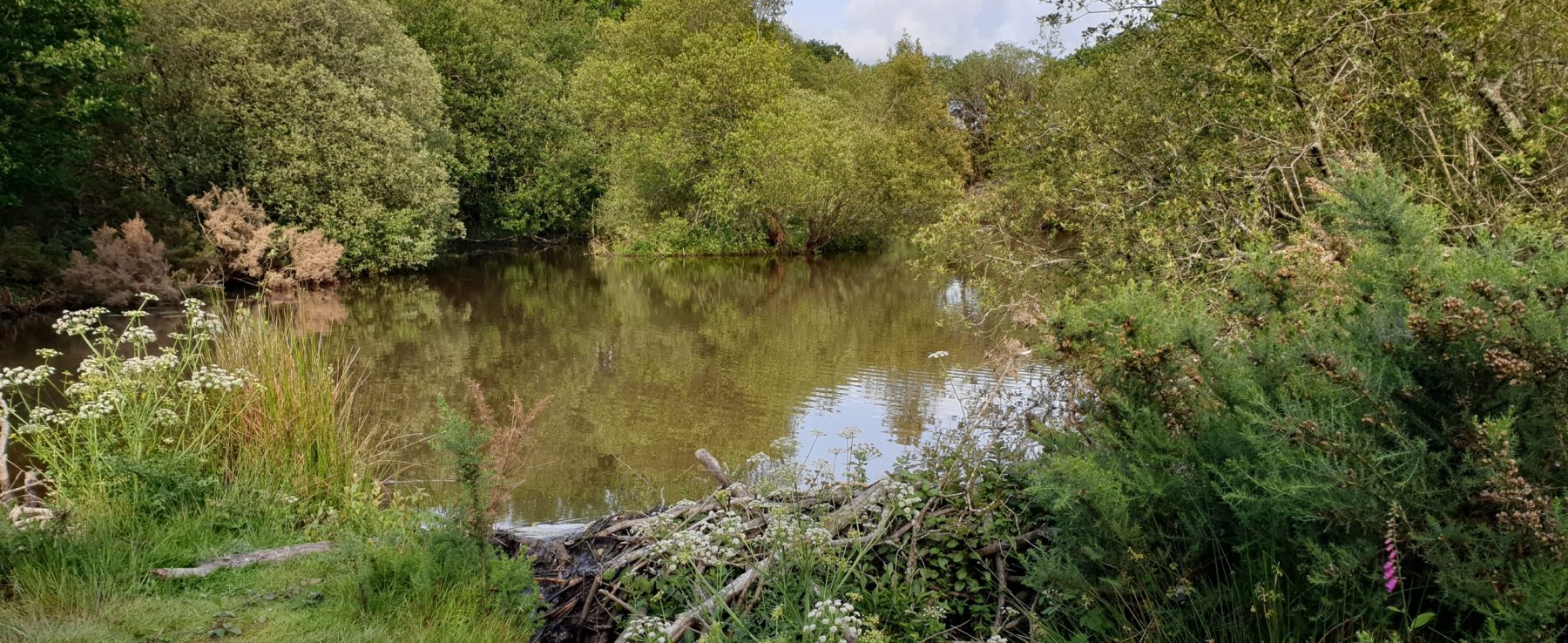[av_textblock size=” font_color=” color=” av-medium-font-size=” av-small-font-size=” av-mini-font-size=” av_uid=’av-k1vwe2ar’ custom_class=” admin_preview_bg=”]
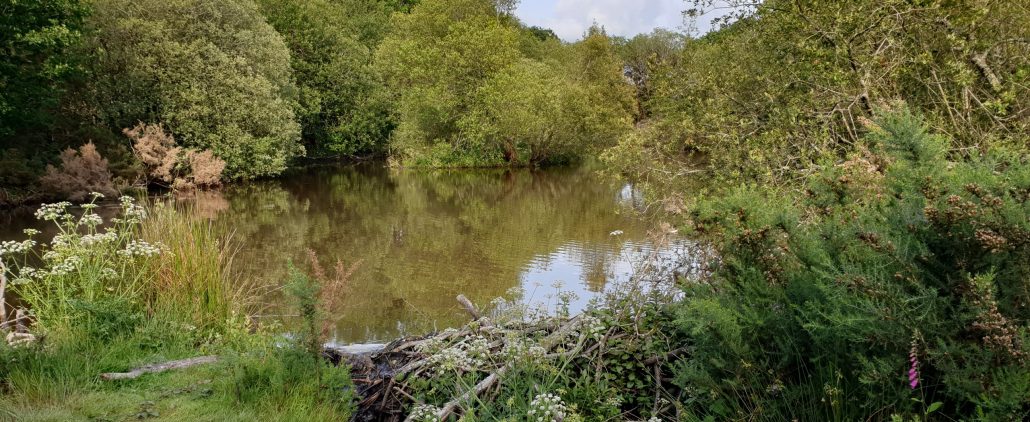
Changing Times Changing Nature
I think it is a good time to consider the changes through time that have taken place on that part of the farm that is now hosting the Cornwall Beaver Project. A wet rush pasture we called the Moor.
My recollections are that nothing very much changed here until the mid 80s. Hitherto it had been a wet pasture. So wet that a stream ran down the centre of the field in winter, and there were many traces of the old pre-Victorian water course, with here and there banks still visible, and the ghosts of old meanders showing up in richer toned vegetation. As I grew up and became keen on geography I often wondered what had caused those meanders in such a small stream bed. It was a field that was forever rushy despite Dad’s attempts to improve the grazing. Useful ground to keep bullocks on but never top grazing. The sort of field where livestock get exposed to liver fluke.
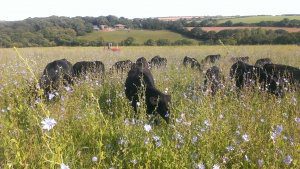
The actual stream was canalised during the great Victorian drive to drain land, in a straight ditch that followed the field boundary and effectively moved a couple of feet uphill from the natural course. This canalisation was accompanied by a dense pattern of capped drains across the bottom of the valley and represented a heavy investment in money and physical labour. Around 1860, interest free government loans were made to many farms and estates to carry out this work. Clearly this was seen as highly desirable at the time by the powers that be. I really wonder though, did that investment ever pay a dividend? Were the loans ever paid back? Despite the drainage work the field was always very wet, and drainage would never be able to turn the kaolin clay soil into a really productive medium.
Fast forwarding to the 1980’s and I was at Bangor studying Forestry. I was very interested in improving our farm for nature, and making it more resilient to climate fluctuations. Having a reserve of water seemed to be a good idea too, so Dad agreed to create a pond on the Moor. In the winter of 1985 (following a long dry summer) a swing shovel and bulldozer came in and produced a useful sized pond in a matter of a few days. Following that, we set up a Broad Leaved Woodland Grant Scheme with the Forestry Commission and planted the field up (an area of just over 2 hectares) with beech, ash, oak, alder and willow, planting in single species groups rather than an intimate mixture.
The whole field was fenced to prevent browsing by livestock, and we watched the changes commence. Firstly, the trees began growing nicely, concurrently with the pond greening over and a variety of aquatic plants soon appeared too, not unexpected as ponds are supposed to be new features that can have very rapid ecological change. The next thing and far more striking was over the next few years: the rapid colonisation of the site by bramble and gorse. So much so that by 1990 it was really hard to navigate the site on foot apart from a few pathways we struggled to keep open. I had never appreciated quite how tall unconstrained bramble and gorse will grow, or how thick and fast. Apart from the paths, visibility was cut down to just a few metres. Roe deer moved in, as did grey squirrels with dire consequences for the oak trees.
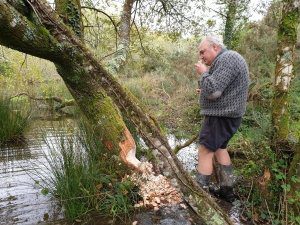
We kept a small group of pigs there from 2005 in small fenced areas and they proved incredibly successful at clearing out the bramble within those enclosures, and as we moved them on, grass became the chief ground flora. But along with the decision to bring beavers we removed the pigs finally, and once again the bramble started to proliferate. By now the tree canopy was mostly quite dense, but of quite variable height depending on species. The most disappointing was the oak which had been hammered by squirrels bark stripping on 100% of the trees. This stripping had the effect of killing off the leading shoots, preventing the production of decent timber, although not actually killing the trees.
Finally, in 2015 we diverted the stream back into its original course, flowing through the pond and re-establishing the old course. As the brambles had largely been replaced by grass we also let cattle graze through the area too. And then in 2017 brought in a pair of beavers.
The beavers have had a range of effects on the ecology. Obviously the site quickly became wetter as dams were built, water slowed down and spread out in new shallow ponds. But just as interesting is the effect on vegetation. Trees are felled within a 20m or so distance from the water, which allows more light to the ground, and, with more light, an explosion in all kinds of ground flora. Furthermore, of the felled trees 70% have remained alive and are showing signs of regrowth. And like the pigs the beavers seem to enjoy clearing brambles, often being observed eating the leaves and stems and sometimes even incorporating them in the fabric of their dams.
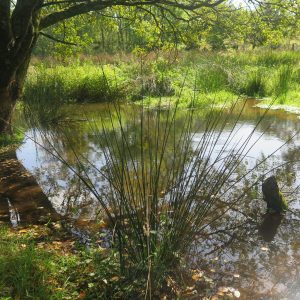
Tree felling is something the beavers excel in, but it requires a lot of energy and time. Some trees seem to be felled but not used in construction of a dam or lodge. Given the investment in effort one wonders why? As discussed, the felling lets more light into the ground layer and a lot more plants grow – many of which are used as food by the beavers but also creating more edge effect, which encourages greater diversity of fauna. And especially with coppice growth, young tender shoots from tree stumps can become a source of food and material in time. Are beavers actually farming their riparian zone to increase the food available for them? How much intelligence can we ascribe to these animals? So much of what they do reeks of thought and planning, although we assume that their behaviour is largely innate.
Anyway, we have gone from a wet pasture, to a tangled thicket of bramble, gorse and young trees, to a more open situation with smaller pockets of bramble, to a wetter, broader riparian zone, still containing trees but with growing gaps in the canopy and slowly reducing bramble thickets with a greater variety of plants and animals. We are very keen to still use the Moor as a place to graze cattle from time to time and also harvest firewood there. We are very aware that these ecological changes are going to be an ongoing process and are agog to see what happens next, and also keen to allow the beavers to spread up and downstream from their current enclosure to bring their magic back to more of our little Cornish valley.
Contact Beaver Trust for support at info@beavertrust.org and visit www.beavertrust.org for more information and to arrange a trip to the Cornwall Beaver Project at Woodland Valley Farm.
 Chris Jones
Chris Jones
Director, Beaver Trust and Cornwall Beaver Project
#beaverbelievers
© Chris Jones 2020
[/av_textblock]

